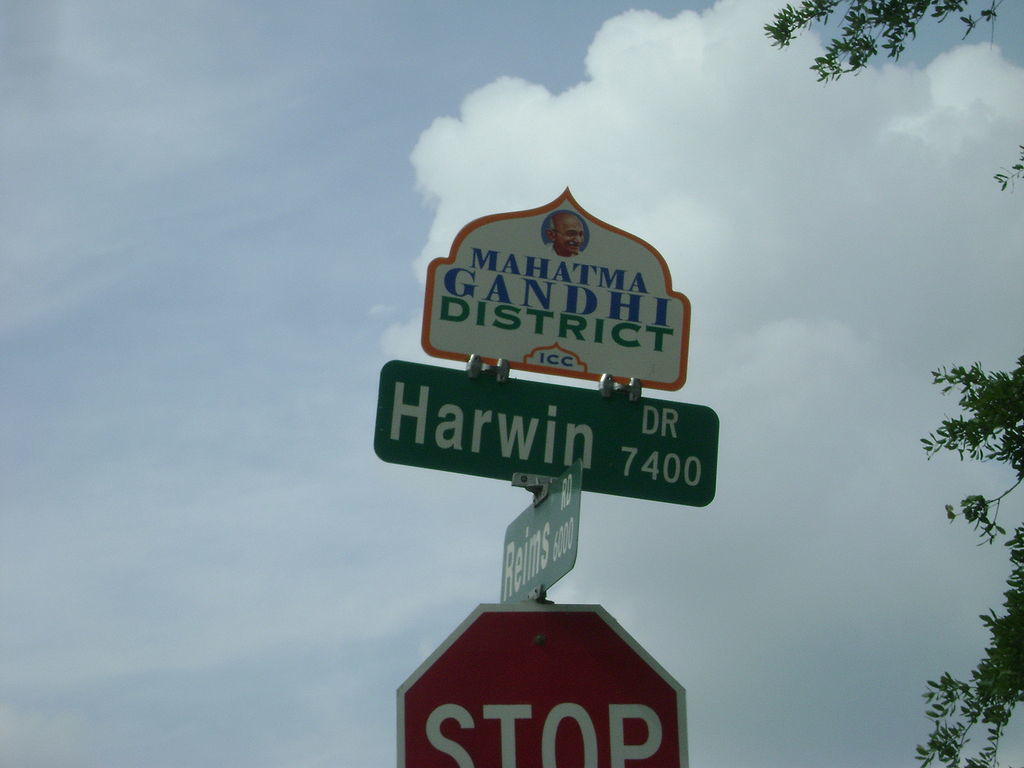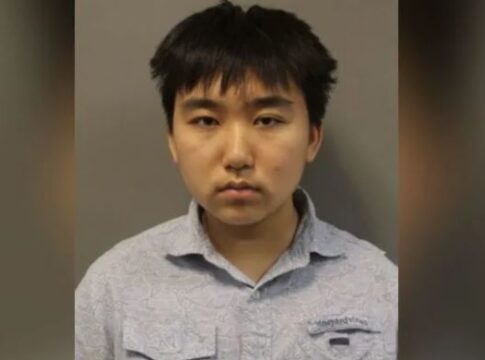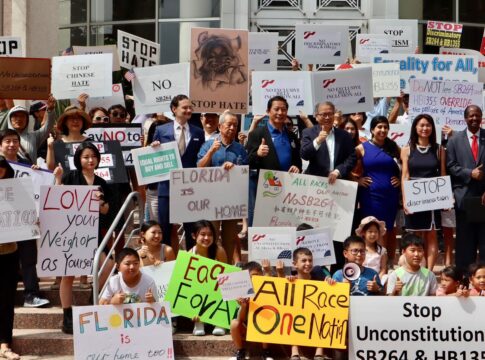By Nathan Reddy, Community Works Institute
(Editor’s Note: Read AsAmNews columnist’s Shree Baphna’s Is the term Asian American really a lie here.)
“Who’s in this photo? The officer who’s blocking people off? He’s Hmong American… That is America. A Black man was murdered in cold blood and we were on the [expletive] sidelines, watching. I’m not saying we were the ones who killed George Floyd, but we have to be the ones who pull that cop off his neck. We think we’re not part of the story, but we’re at the scene of the crime!”
This is a lie. The “we” here that Hasan Minhaj, an Indian American, claims with Tou Thao, the Hmong American who watched as Derek Chauvin killed George Floyd is an illusion. Don’t get me wrong. Thao was intensely wrong for not having his partner take his knee off Floyd’s neck. But to make him a symbol of Asian America’s complicity is an error, because there is no such thing as “Asian America.”
Indian Americans make the highest average median household income of all ethnic groups at $101,591. And how much is the equivalent for Hmong Americans? $48,000. That’s more than double. In what world are both of these groups linked? In a world organized by race. In his segment “We [emphasis mine] cannot stay silent about George Floyd,” Minhaj makes great points about his own community’s complicity in and perpetuation of anti-Blackness. As an Indian American, I have no qualms about this, nor any problem with the call to action and change. I, however, think we can be more creative about how to go about that change, which speaks to the point of this piece.
LATEST STORIES
The term “Asian American” was coined as part of radical ethnic movements in the ‘60s, most notably, it was how politically active Asian immigrants responded to the Black Power movement. However, as radical as it was, it aligned with the prevailing racial logic of its time that still reigns to this day, and brought all Asians who emigrated from America and their children under its expansive umbrella. Its creation was in service to the Black-White binary, as we had to racialize ourselves as “Asian Americans” to become visible, and in that move, we lost a keen source of diversity and the possibility for multiple perspectives working together for justice. We cut off the political participation of communities who do not necessarily identify as “Asian American.” Many Asian American college students who brought home their radical politics were rejected by their home communities who worked hard to send them to college and still held onto nationality-based identities, doing their politics accordingly.
Furthermore, the term “Asian American” became even more tenuous after the passage of the Immigration and Nationality Act of 1965, which saw privileged Asian Americans, especially South Asian Americans, immigrate to the United States. The act was preceded by the Civil Rights Movement’s focus on national legislation which made the United States’ Whites-only immigration criteria an embarrassment, and also the United States’ need for STEM labor to compete with the Soviet Union during the Cold War.

In effect, planes of privileged South Asian Americans came to this country and caught the tail-end of benefits bought for them by Black and Asian American activists, and were effectively racialized as Asian Americans, despite a huge schism between their communities and pre-1965 Asian Americans who were largely working class.
Let us not forget that the United States government also capitalized on the racialization of Asian Americans to cement the model minority, a cementing made easy by the Immigration and Nationality Act of 1965 bringing over skilled Asian labor, to detract Asian countries from falling to communism. ‘See! In a democracy, Asians succeed!’
As such, even though “Asian American” has radical roots, the term has been completely and utterly institutionalized and state-sanctioned since. In this regard, politicized usage of “Asian American” to reject the model minority myth, as empowered Asian Americans oftentimes do, is counterproductive. We must also grapple with the fact that this form of empowerment subtly reinforces the model minority creation just by constantly drawing attention to it. The prevalence of this act becomes clear when one takes a glance at any recent piece about Asian America and Asian Americans. It must make its thesis the rejection of the model minority myth, and each one is just from a different perspective. The Indian American rejection of the model minority myth. The Vietnamese American rejection of the model minority myth. Just repackaging of the same thing. Reject the model minority myth. We get it.
Also, what of the Asian Americans who cannot disavow the model minority figure because they are actively racialized into it? I am speaking of the recent Indian immigrants on H-1B visas who are hired by tech companies because they are cheaper than hiring American workers. They certainly fit the model minority phenotype and archetype of the twenty first century, but it is not their fault that global systems of oppression mold their lives.
It is much easier for self-identified “Asian Americans” who occupy privileged positions in society to symbolically relinquish the model minority figure if they are not in the direct trappings of what it means to be racialized as one. Many tech companies are not hiring Black and Latinx workers, in favor of the “model minority” Indian immigrants. They are more so caught in the system, and in this way, accusing them of anti-Blackness belies much more complex forces at work, and privileges those who perceive that only psychological work is needed to overcome anti-Blackness, when anti-Blackness is in fact baked into the structure of the United States, and it is incumbent on one’s livelihood to actively participate in it.
As a result of all of these historical and political movements and hegemonies, we now roundly have “Asian American” instead of Karen (yes, Karen, not Korean, or that “Karen”) American, or Hmong American, or just “Karen” or “Hmong.” Or “Indian” or “Tamil” or “Telugu,” in reference to the recent Indian immigrants whose citizenship is tenuous. All these groups are not afforded any political or economic power and find no relief in “Asian America.” And yet, they can be scapegoated as complicit in oppression by “Asian Americans” much more privileged than them.
Contrast their situation to Indian Americans who largely trace their emigration to the Immigration and Nationality Act of 1965. They wield substantial economic power and political power, if we are to use Hasan Minhaj’s own symbol motif against him, and his own coinage of the term “Brown renaissance” to describe the seismic, upward shift in South Asian American representation in recent years among all quarters of American society, with Minhaj perfectly encapsulating that representation in the nexus between pop culture and politics. These are the privileged of the “privileged” minority, and it is with this privilege that he made Tou Thao his wrongful brother, and unfairly exploited the entirely different situation of the Hmong American community by virtue of their both being “Asian American” for his own segment on George Floyd’s murder and the complicity of “Asian Americans.”
“Asian America” is an extremely harmful lie, in countless different aspects. We must move away from it. My pivoting to the schisms within the Indian American community, let alone the Hmong American community, draws further attention to deep inequalities hidden by an empty political motive to racialize for the sake of participating in a racialized system, a participation reserved for the most privileged Asian Americans. Even my own copious usage of the term “Asian American” to disavow it speaks to how deeply ingrained this form of thinking is within the system. And my own privilege for being able to wield it in this manner.
This is not diversity. Diversity is only apparent when difference can be perceived and voiced, and “Asian America” covers up layers of it. In an insidious attempt to cover up that cover up, we brand the whole steaming mass as “diverse” and leave it at that. No longer can this continue, and I say that as an Indian American who was privileged enough to write this piece. I am not “Asian American.” I am Indian American, and for now, I’ll leave it at that.
About the Author
Nathan Reddy recently graduated from Cornell with a BA in American Studies, with minors in Asian American Studies and Public Service Studies. At the same time of graduation, he had also completed the Cornell Public Service Center Scholars Program, the University’s service-learning program which he says, “personally made college worth it, intrinsically and because it inspired me to become an educator myself.” He says that this essay chronicles his experience details as someone with an Asian American identity grounded in service-learning principles, and how that perspective informs the way he operates in the world, now and in the future. Nathan is a regular contributor to Community Works Journal and is currently a Fellow with Community Works Institute (CWI)










Thank you thank you for this write up! Racism and classism impact the Yellow community (I can’t speak to the Brown Asian experience at all, so that’s why I’ve omitted it) in so many ways, that racism can’t be honestly talked about without mentioning class. It’s awesome to see more journalists, like Nathan Reddy here and Jay Caspian Kang (at https://goodbye.substack.com/p/tou-thao-and-the-myths-of-asian-american) speaking out about this. This phenomenon of having “celebrity representatives” who make casual overarching statements is only benefitting their White management, and White domination in the U.S.
My two cents: Hasan lost me on his first episode of his Netflix show when he bashed Asian people who called out Harvard’s anti-Asian racism as “betrayers, traitors.” While affirmative action is indeed a conflicted topic, speaking out against discrimination should be supported, especially when you occupy a wider platform. The dude has a lot going for him, but the good thing is there’s so many other Indian perspectives to support and stan 🙂
How are Hmong , Vietnamese and other under-privileged Asian ethnic groups in the US being scapegoated with the term “Asian American” in the US and for what? You must realize this term has allowed Asian Americans from all different ethnicities and backgrounds to unite right now in protest of the rise in hate crimes, assault and verbal harassment that has happened against them, particularly the elderly and women, in relation to COVID-19 stigmatization. Without uniting there’s no way to fight oppression. Also you are making a strawman argument with stating that Tou Thou is the symbol for Asian Americans and that his actions represent the sentiments of Japanese Americans, Indian Americans, Thai Americans, etc. I cannot find any evidence that his actions has sparked an anti-Indian, anti-South Asian, anti-Asian sentiment amongst Americans. If you look at any rallying done by Asian Americans today in 2020 a majority of them you will see holding signs that say “Asians for Black Lives” or “Yellow Peril Supports Black Lives.” I think Asian Americans are already well aware of the historic division they have had with the black community in American and are bridging it now. Don’t worry when a majority of people in the US think of Asian Americans they do not associate it with being South Asian unless you are in the UK where it is more prevalent.